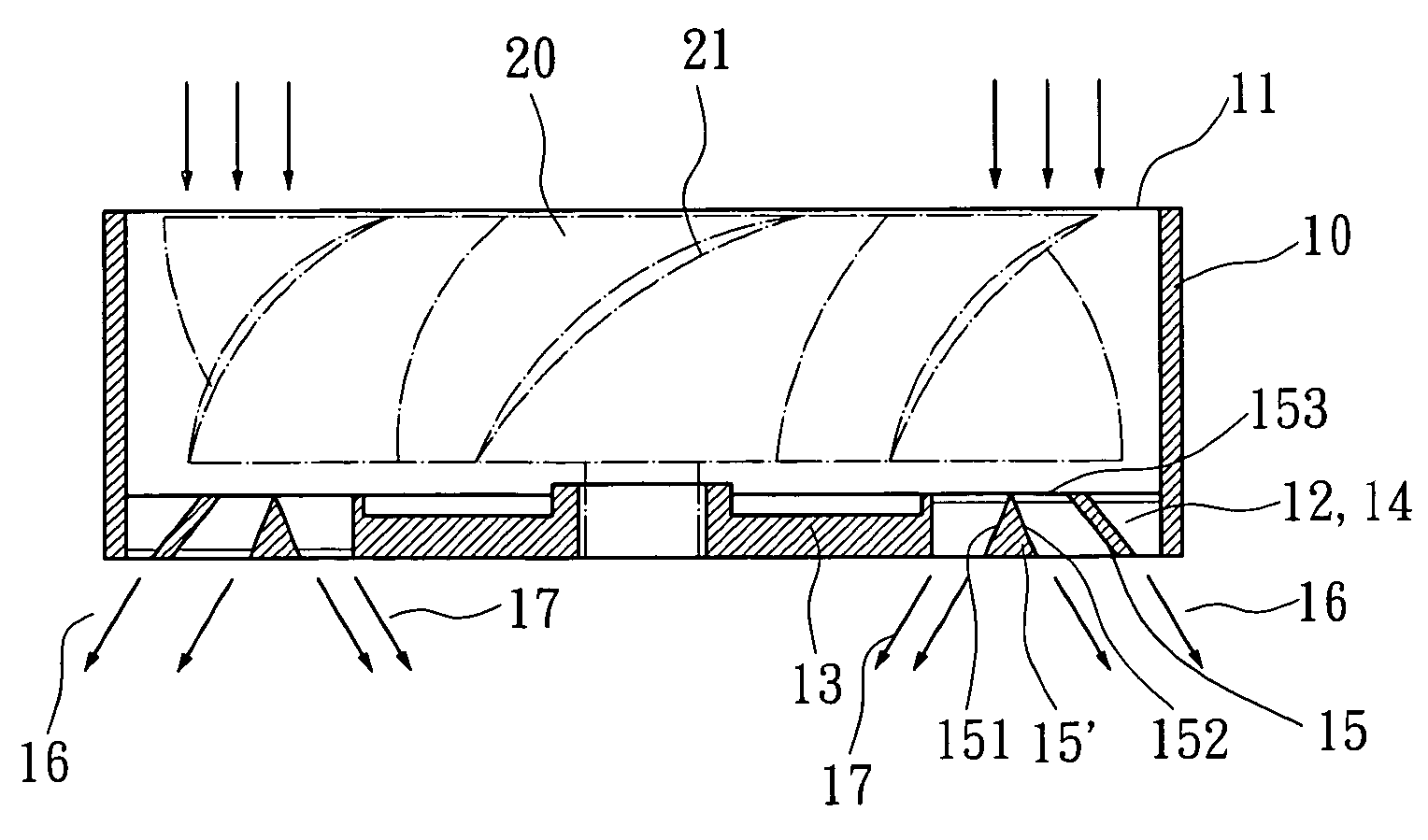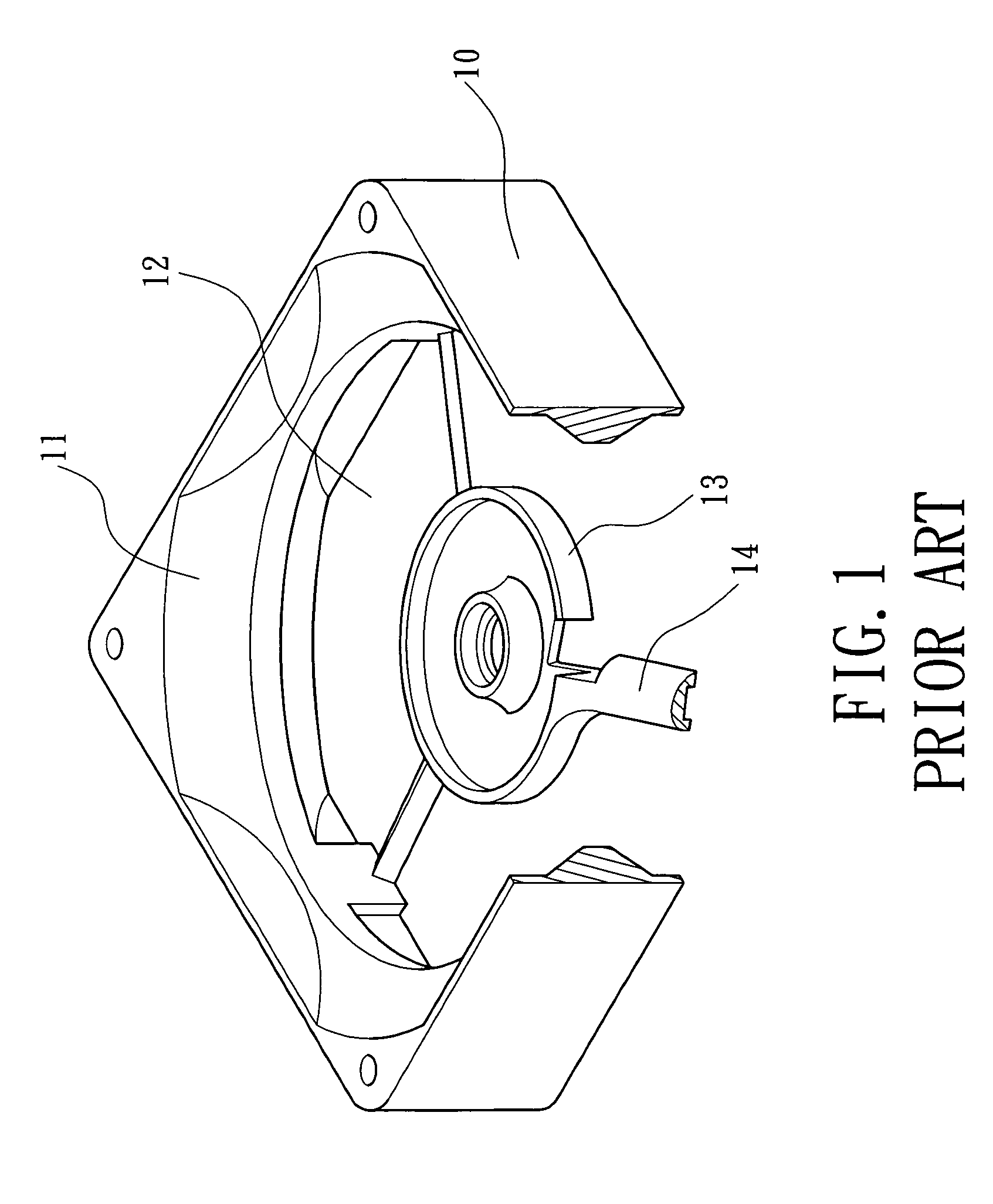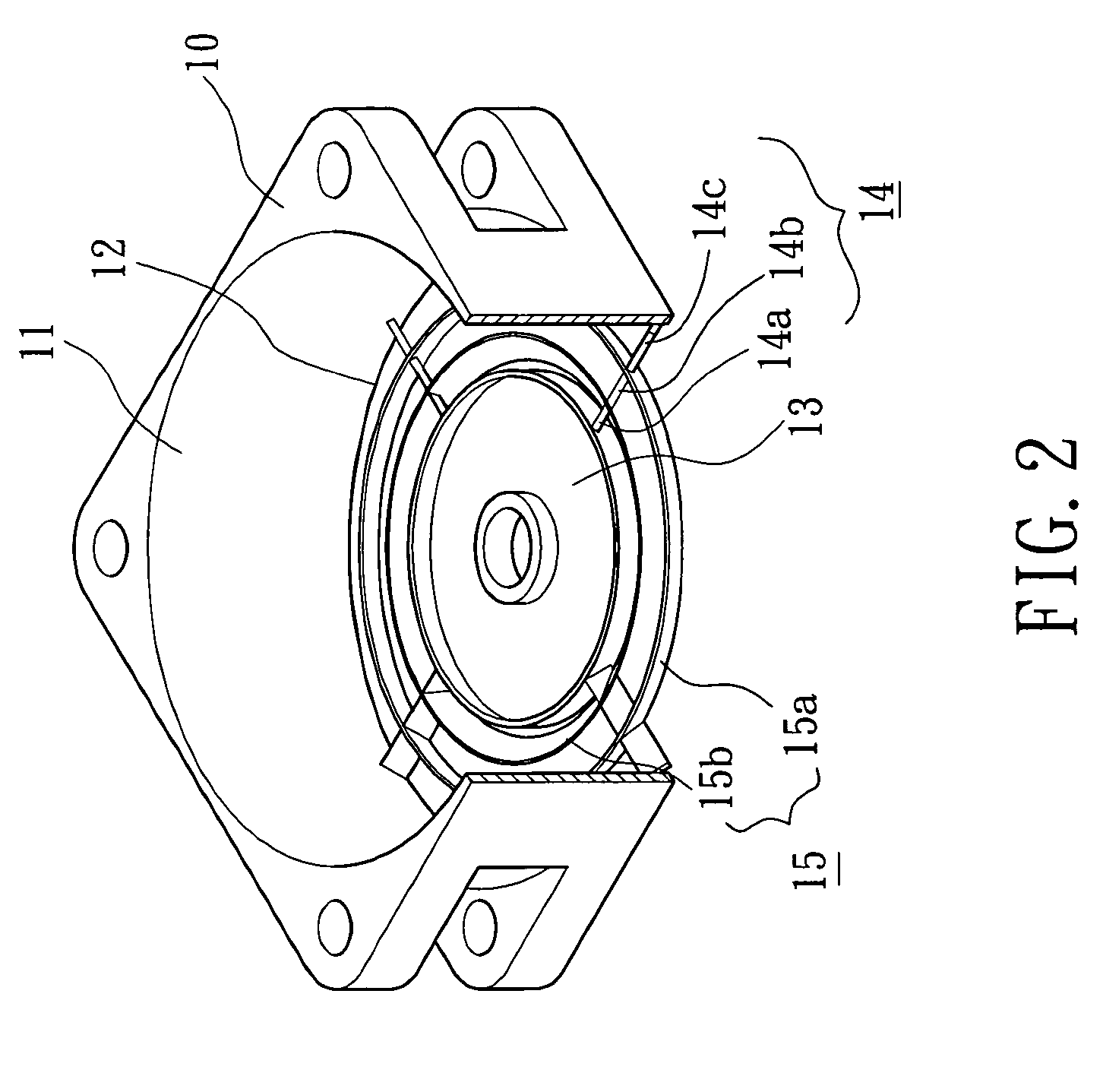Airflow guiding structure varying in inclinations of air-guiding rings for a heat-dissipating fan
a technology of air-guiding structure and heat-dissipating fan, which is applied in the direction of machines/engines, liquid fuel engines, electric apparatus casings/cabinets/drawers, etc., can solve the problems of poor heat-dissipation effect, adverse heat-dissipation effect, and non-uniform heat dissipation, so as to improve the overall heat-dissipation efficiency, reduce wind noise, and increase wind pressur
- Summary
- Abstract
- Description
- Claims
- Application Information
AI Technical Summary
Benefits of technology
Problems solved by technology
Method used
Image
Examples
first embodiment
[0035]Referring to FIGS. 2, 3, 4, and 4A, a heat-dissipating fan with an airflow guiding structure in accordance with the present invention includes a casing 10, an air inlet 11, an air outlet 12, a base 13, a plurality of ribs 14, and at least two air-guiding rings 15a, 15b. The casing 10 may be made of plastics or metal, with the air inlet 11 and the air outlet 12 being respectively defined in two opposite sides of the casing 10. The base 13 is located in the air outlet 12, and an impeller 20 (in FIG. 4) is mounted on the base 13. The ribs 14 extend between the base 13 and the casing 10 along a radial direction of the base 13. The air-guiding rings 15a, 15b are co-axially arranged and located between the base 13 and the casing 10 (in FIG. 4) and extend along a longitudinal direction of the casing 10. The air-guiding ring 15a is parallel to an annular wall of the casing 10 while the air-guiding ring 15b inclines to the base 13 along a longitudinal direction of the casing 10, as bes...
second embodiment
[0038]FIGS. 5 through 7 illustrate a heat-dissipating fan with the airflow guiding structure varying in inclinations of air-guiding rings in accordance with the present invention. In this embodiment, the air-guiding rings 15a, 15b extends downwardly (downstream) and radially outward away from the base 13, as best shown in FIG. 7. The air-guiding rings 15a, 15b vary in inclinations with respect to a longitudinal direction of the casing 10.
[0039]Still referring to FIG. 7, when the impeller turns 20, the blades 21 of the impeller 20 introduce airflow into the casing 10 via the air inlet 11 and expel the airflow via the air outlet 12, thereby dissipating heat from an object such as a heat sink or central processing unit (not shown). When the airflow passes through the air-guiding rings 15a, 15b and the ribs 14, the air-guiding rings 15a, 15b that varies in inclinations in a radially outward direction divides the airflow into an inner portion 17 adjacent to the base 13 and an outer porti...
third embodiment
[0042]FIG. 8 illustrates a heat-dissipating fan with the airflow guiding structure varying in inclinations of the air-guiding rings in accordance with the present invention. In this embodiment, the air-guiding rings 15a, 15b extends downward (downstream) and radially inward, and the air-guiding rings 15a, 15b vary in inclinations with respect to a longitudinal direction of the casing 10. Thus, an inner portion 17 of airflow is guided toward an object directly below the base 13, providing improved heat-dissipating efficiency. Following the inclining direction of the air-guiding rings 15a, 15b, varying in inclinations of the air-guiding rings 15a, 15b may increase the wind pressure in the air outlet 12. Further, since the wind pressure of the inner portion 17 of the airflow exiting the air outlet 12 is increased due to downward and radially inward inclination of the air-guiding rings 15a, 15b, the outer portion 16 of the airflow tends to flow radially inward, providing a concentration...
PUM
 Login to View More
Login to View More Abstract
Description
Claims
Application Information
 Login to View More
Login to View More - R&D
- Intellectual Property
- Life Sciences
- Materials
- Tech Scout
- Unparalleled Data Quality
- Higher Quality Content
- 60% Fewer Hallucinations
Browse by: Latest US Patents, China's latest patents, Technical Efficacy Thesaurus, Application Domain, Technology Topic, Popular Technical Reports.
© 2025 PatSnap. All rights reserved.Legal|Privacy policy|Modern Slavery Act Transparency Statement|Sitemap|About US| Contact US: help@patsnap.com



